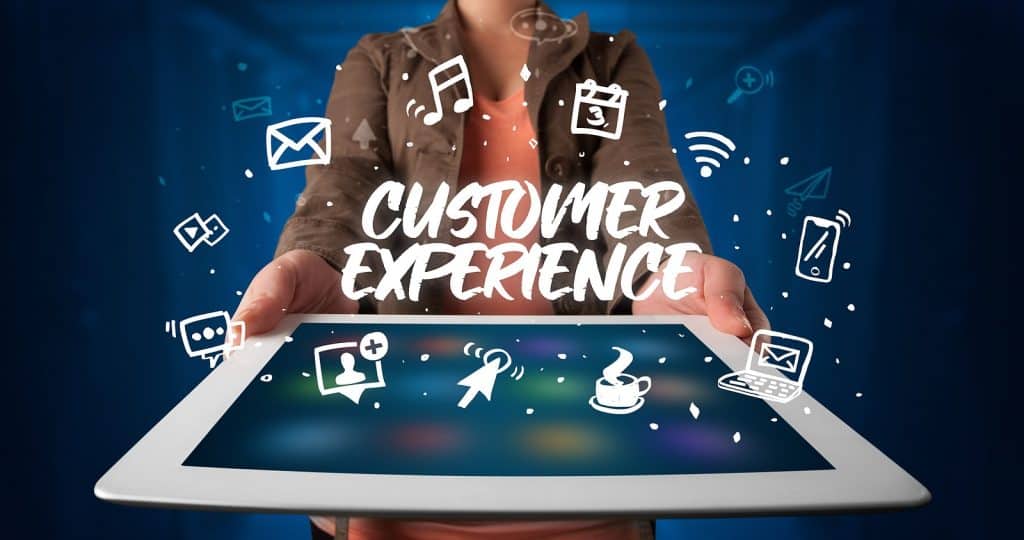Nowadays, for most of us, the majority of our interactions with a supplier are digital in nature. We buy our goods online; we are more likely to browse the web than a physical catalog or walk the mall. And the restrictions brought by the 2020 pandemic have made that even more the case. In fact, most customer experiences will have a digital element, even for the most ‘in-person’ kinds of transaction. Buy drinks in a bar, and you may well pay with your card through a digital device or even with your smartphone, and should you require a receipt, it as likely to be emailed to you as handed over on paper. So if, as suppliers, we care about our customer’s experience of transacting with us, then we must take the digital aspects of that interaction very seriously and work to make them as effective and enjoyable as possible.
Table of Contents
ToggleIf we are focusing on the digital customer experience, then that means working on all the interactions between supplier and customer that take place through a digital medium. In many cases, that maybe the whole – or the vast majority – of the interactions a customer has, meaning their online customer experience is, in fact, the entire customer experience. Typical digital interactions that will set, shape, and modify the customer experience would include the whole range of digital factors available today—not just using websites for shopping, managing bank accounts, and so on. The online customer experience is supported and completed by interactions such as email, social media, instructional videos, and other support via digital like chats – both with real people and chatbots.
A few warnings about digital customer experience
While a supplier may see the digital aspects as a separate focus – the responsibility of IT professionals while other aspects of the customer interface may be driven by other parts of the organization. Be certain that the customer will not see that separation – all elements must work in harmony to deliver the best possible overall customer experience: a failure in any part can nullify everyone’s work, like the weak link in a chain.
Of course, effective technology is needed to deliver that digital customer experience and that technology must be supported and managed. So digital customer experience management will require good technical management. But much more important is to understand how the customer sees things, remaining customer-centric, and that rests much more upon the culture, attitude, and expectations of the customer than it does on a supplier’s technical excellence.
The digital customer experience is not just about digital-type products or technology. Just about every product or service nowadays has some digital element to it, and even the least technological are sold via digital platforms: we live in an age where you can plan and order online how your nail artist will decorate your finger or toenails.
Optimizing the customer’s digital experience
Notwithstanding the caveats set out above, digital customer experience management is clearly a vital element of any organizations’ success in capturing and retaining customers in the digital age. There are a range of factors related to digital interaction that contribute to the quality of the customer’s experience. Some of the obvious areas are:
- Speed – Patience is not the key characteristic of the online customer. More than a few seconds spent waiting for a screen to change can ruin an otherwise satisfactory experience.
- Compatibility with user – Be careful not to presume how a customer might connect to a supplier service, while IT professionals may move to new versions of hardware and software immediately; others may continue with older items much longer but still expect to be able to access services.
- Language – Obviously, using the actual language the customer think in will help, but other subtler aspects of language can help greatly. Be sure, though, that you do know their language though, local variations can cause unexpected misunderstandings (It’s easy to misuse local words within one country, let alone the potential across oceans). But just as important, beware of variations in understanding across age groups, social groups, or other cultural divisions. Too light or flippant an approach can alienate some more serious types, too serious. Although much IT jargon is entering everyday speech, it’s still worth avoiding it where possible. And do make it clear what date ad time formats you are expecting!
- Access – People do understand the need for security much more in recent time and are willing to accept a degree of inconvenience to ensure the security of their data, but still, the ease of meeting those security requirements can have a big effect on the overall experience.
- Allow for exceptions – Try not to make unconscious assumptions. There are many silly examples to illustrate this. Interfaces that allow you to give any country as your address but reject any postcode or zip code that does not meet the supplier country’s format. Or passport expiry date limited to 10 years in the future.
Many of the above seem obvious and trivial, but getting them wrong (and companies do still get it wrong often and frequently) is a guarantee to customer frustration and bad digital customer experience.
Intuition is the goal
These and other fairly obvious aspects of the digital interface will drive customer satisfaction, but above all, the digital interface should be intuitive for the customer: easy for them to know what to do to get the result they want. Delivering that level of intuition requires, first and foremost, an understanding of what would be natural and obvious to the customer. In other words: know your customer. Broadly speaking, anything that requires the customer to stop, think, or be doubtful about what to do is bad news.
Perfectly intuitive systems allow the customer to navigate effortlessly, with each step feeling so natural that they don’t notice they might be doing something for the first time. And to ensure that the digital customer experience is intuitive, user testing is essential. Don’t expect IT professionals to be able to build something that will be intuitive to non-IT customers. The best customer experiences tend to come via systems that have involved typical customers in the development, design, and ongoing improvement of them. If you want to know how a customer thinks, there is no better source than those customers.




